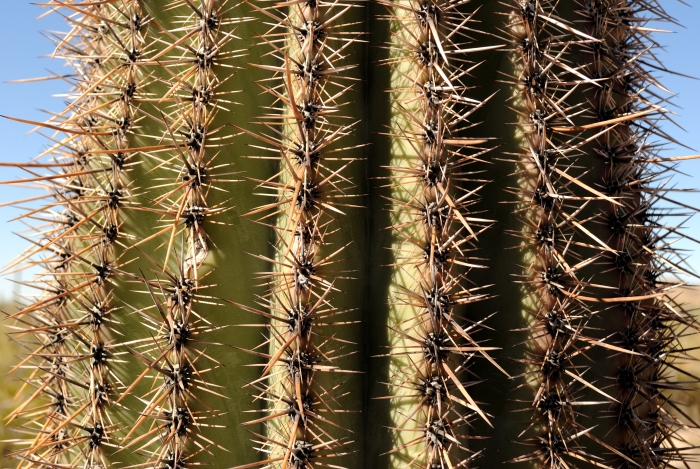Saguaro
(Carnegiea gigantea)
Saguaro (Carnegiea gigantea)
/
/

Daniel Ramirez from Honolulu, USA
CC BY 2.0
Image By:
Daniel Ramirez from Honolulu, USA
Recorded By:
Copyright:
CC BY 2.0
Copyright Notice:
Photo by: Daniel Ramirez from Honolulu, USA | License Type: CC BY 2.0 | License URL: https://creativecommons.org/licenses/by/2.0 | Uploader: File Upload Bot (Magnus Manske) | Publisher: Wikimedia Commons | Title: Carnegiea_gigantea_trunk_-_close_up_(6989395593).jpg | Notes: Carum carvi L.: flower |























































Estimated Native Range
Summary
Carnegiea gigantea, commonly known as Saguaro, is an evergreen succulent native to the Sonoran Desert in the Southwestern United States and Northwestern Mexico. It can reach over 40 feet (12 meters) in height and is capable of living for more than 150 years. Saguaros are iconic for their massive, columnar trunks and may develop their first side arm after 75–100 years, although some never grow any arms. These arms increase the plant’s reproductive capacity by allowing for more flowers and fruit. Saguaros can absorb and store significant amounts of rainwater, visibly swelling and then gradually using this reserve to endure drought conditions. As a keystone species, they provide critical food and shelter for a wide array of desert wildlife. The plant’s white, waxy flowers bloom from April through June, opening after sunset and closing by mid-afternoon, and are pollinated by bats, birds, and insects. The flowers require cross-pollination due to self-incompatibility and need large amounts of pollen because of the numerous ovules.
The Saguaro is celebrated for its sculptural form and is often used as a focal point in xeriscapes and desert gardens. Its ability to store water makes it a low-maintenance plant, ideal for arid environments. It thrives in full sun and requires very little water once established, preferring well-draining soil. It is sensitive to frost and should not be planted at elevations where extended cold temperatures occur. While slow-growing, the Saguaro’s impressive stature and longevity make it a rewarding choice for gardeners in suitable climates.CC BY-SA 4.0
The Saguaro is celebrated for its sculptural form and is often used as a focal point in xeriscapes and desert gardens. Its ability to store water makes it a low-maintenance plant, ideal for arid environments. It thrives in full sun and requires very little water once established, preferring well-draining soil. It is sensitive to frost and should not be planted at elevations where extended cold temperatures occur. While slow-growing, the Saguaro’s impressive stature and longevity make it a rewarding choice for gardeners in suitable climates.CC BY-SA 4.0
Plant Description
- Plant Type: Succulent
- Height: 10-50 feet
- Width: 3-10 feet
- Growth Rate: Slow
- Flower Color: White
- Flowering Season: Spring
- Leaf Retention: Evergreen
Growth Requirements
- Sun: Full Sun
- Water: Very Low
- Drainage: Fast
Common Uses
Bee Garden, Bird Garden, Drought Tolerant, Edible*Disclaimer: Easyscape's listed plant edibility is for informational use. Always verify the safety and proper identification of any plant before consumption., Fire Resistant, Fragrant, Hummingbird Garden, Low Maintenance, Rock Garden, Showy Flowers
Natural Habitat
Sonoran Desert in the Southwestern United States and Northwestern Mexico
Other Names
Common Names: Giant Cactus
Scientific Names: , Carnegiea gigantea, Carnegia gigantea, Cereus giganteus, Carnegiea gigantea f. aberrans, Carnegiea gigantea f. cristata, Pilocereus giganteus,
GBIF Accepted Name: Carnegiea gigantea (Engelm.) Britton & Rose